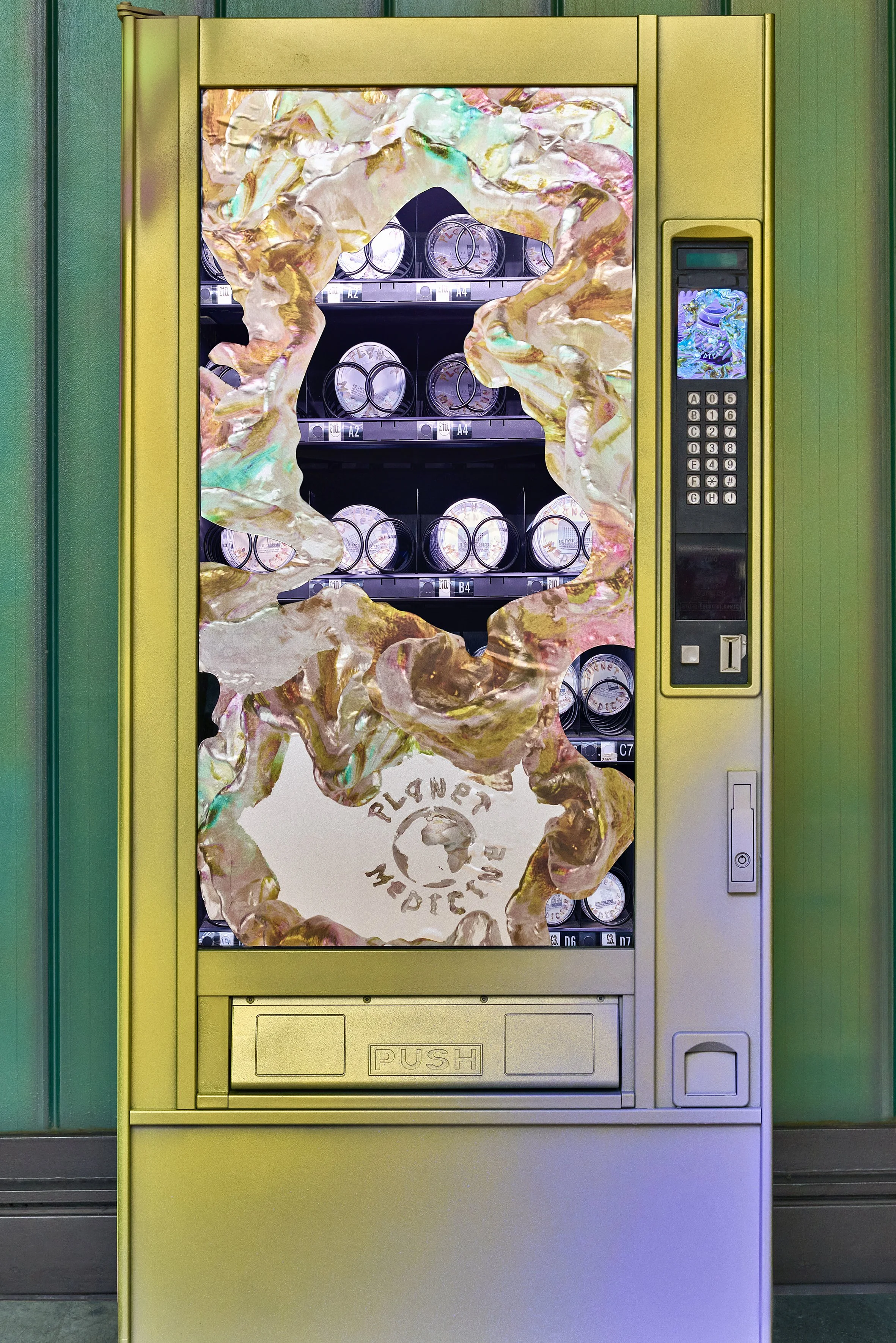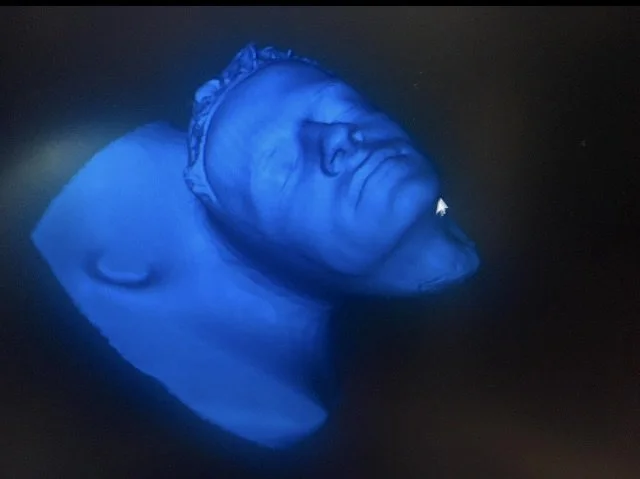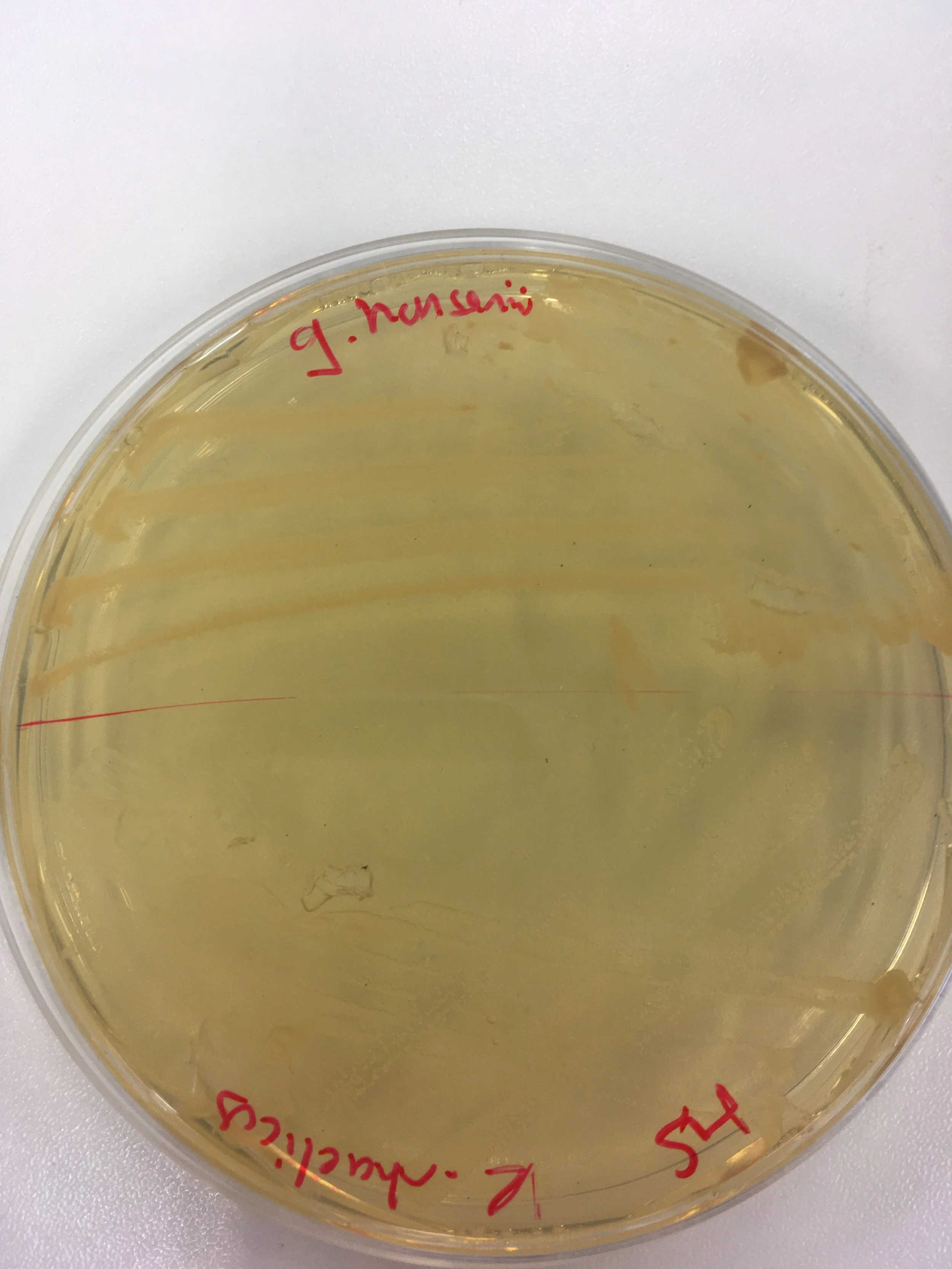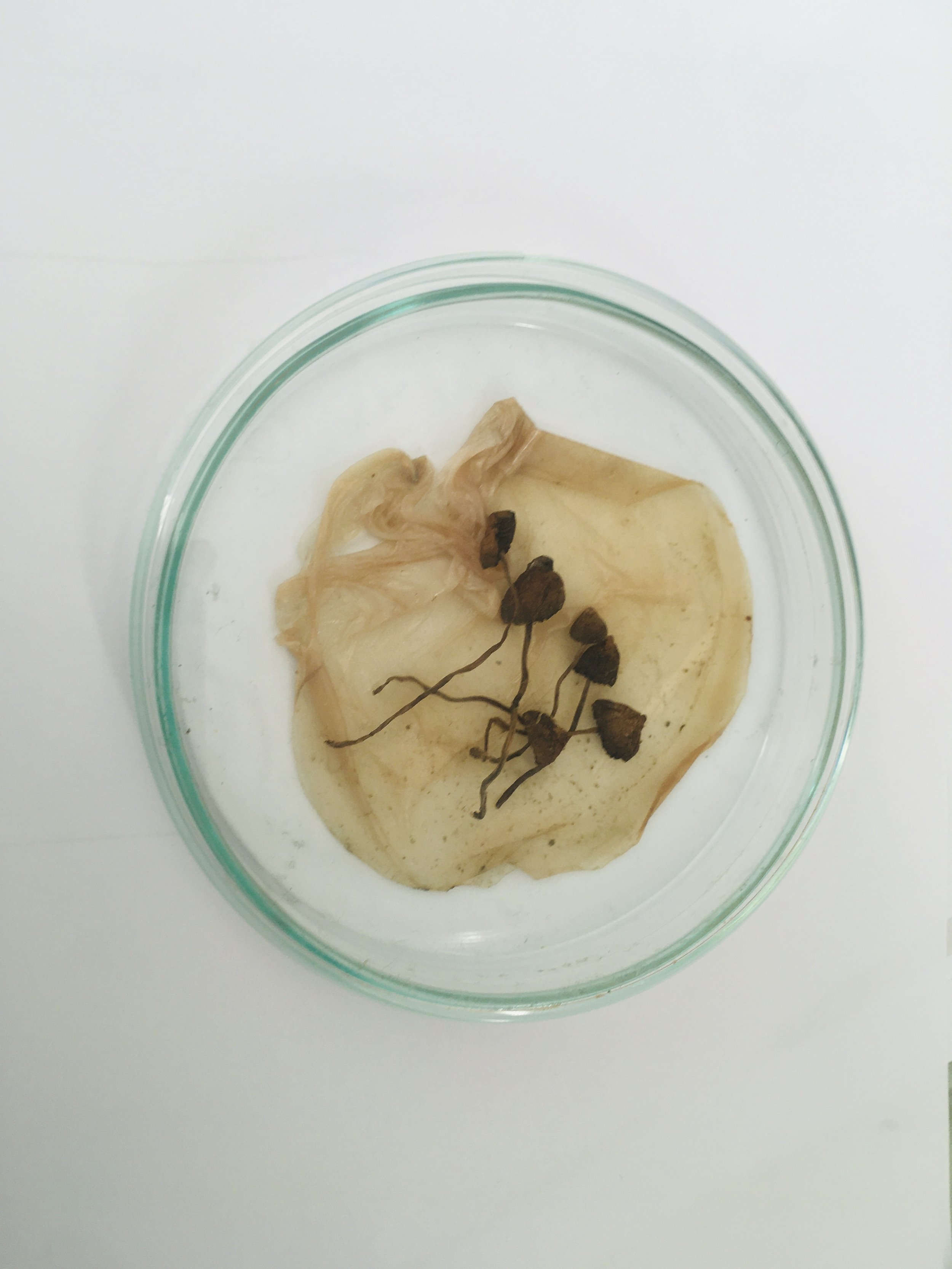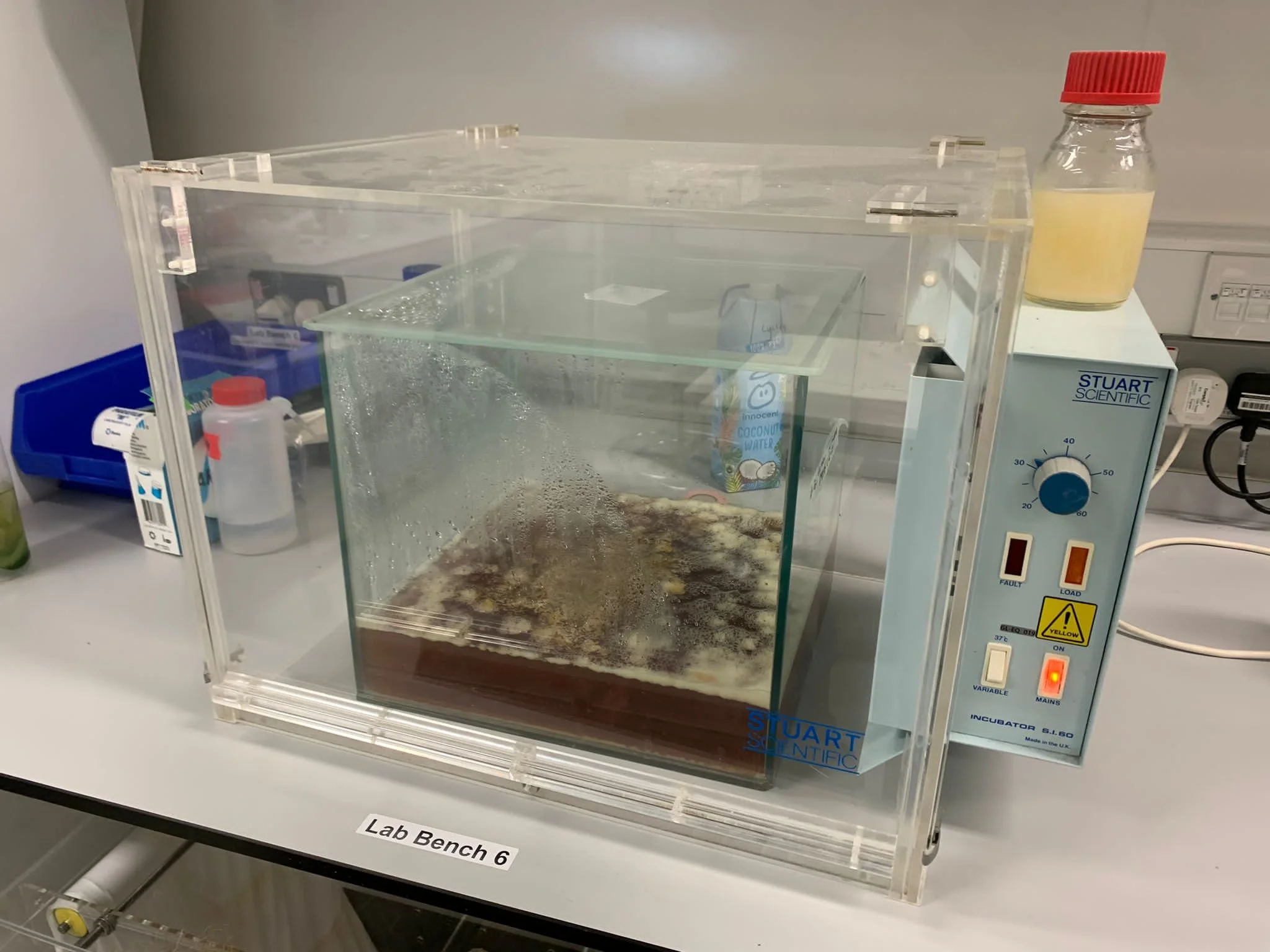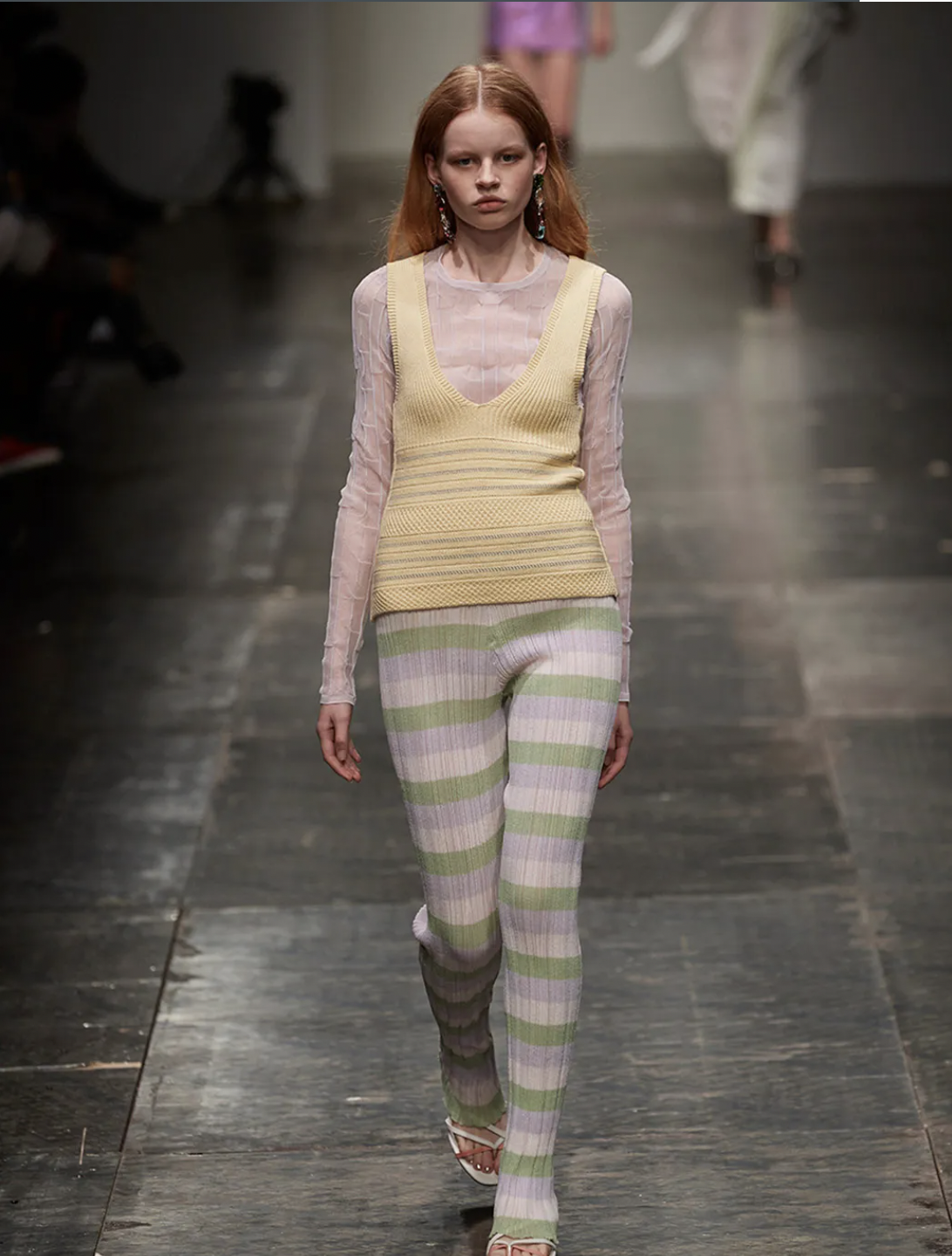Interdisciplinary Designer and Researcher
PhD Institute of Creative Futures LUL
MSc Psychedelics: Mind, Medicine and Culture University of Exeter
MA Material Futures Central Saint Martins UAL
BA Fashion Design Central Saint Martins UAL
Exploring the entanglement of human and planetary health through the lens of psychedelic research. Speculative and critical design with a regenerative, living systems approach. One Health advocate. Designing artefacts, therapeutic processes and experiences mediated through symbiotic social and material relations. Considering material innovation, ‘ancestral futures’ and new animism to extend the definition of stakeholders in scientific research to include our ‘more than human’ ‘communitas’.
Regenerative Design for Psychedelic Settings
Regenerative Design for Psychedelic Settings
Criteria 1 - Minimal 2 - Emerging 3 - Developing 4 - Advanced 5 - Fully Regenerative
Ecological Integration (Naess, 1987) 1. Minimal consideration of nature; artificial materials dominate. 2. Some natural elements, but lacks integration with the ecosystem. 3. Balanced mix of natural and built elements, with some ecological awareness. 4. Strong ecological integration with sustainable materials and biodiversity support. 5. Fully embedded within local ecology, enhancing biodiversity and ecosystem functions.
Materiality & Sustainability 1. Predominantly synthetic, non-renewable materials with high environmental impact. 2. Some sustainable materials used, but with limited regenerative impact. 3. Use of renewable, biodegradable materials with moderate ecological impact. 4. Majority of materials sourced regeneratively, supporting local ecosystems. 5. Entirely regenerative, locally sourced materials with closed-loop sustainability.
Access to Local Materials & Bioregional Crafting (Wahl,2016) 1. No use of local materials; reliant on mass-produced, external supply chains. 2. Some local materials incorporated but with minimal cultural or ecological significance. 3. Increasing reliance on locally sourced materials and traditional crafting methods. 4. Strong integration of bioregional materials and knowledge-sharing with local artisans. 5. Fully embedded within bioregional networks, using hyper-local, traditional, and regenerative material sourcing.
Living Materials & Biomaterials (Benyus, 1997) 1. No use of biomaterials; conventional industrial materials dominate. 2. Some biomaterials included but without integration into regenerative processes. 3. Moderate use of biomaterials with awareness of their ecological benefits. 4. Active use of living materials (e.g., mycelium-based structures, algae panels) to support healing and biodiversity. 5. Fully regenerative system incorporating self-sustaining, living materials that grow, adapt, and decompose naturally within the setting.
Supply Chain Ethics & Methods 1. No transparency; materials sourced without ecological or ethical consideration. 2. Some attempt at ethical sourcing, but lacks accountability. 3. Majority of materials ethically sourced, with some regenerative practices. 4. Fully traceable, ethical supply chain with emphasis on ecological and social responsibility. 5. Circular economy approach ensuring minimal waste, local economic support, and closed-loop material cycles.
Social & Bioregional Approaches (Mang & Reed, 2012) 1. No engagement with local communities or cultural contexts. 2. Limited inclusion of local or Indigenous perspectives. 3. Some integration of bioregional knowledge, but not central to design. 4. Deep engagement with local communities, respecting traditions and knowledge. 5. Fully co-created with local communities, aligning with cultural and ecological wisdom.
Sensorial Design: Smell 1. No attention to olfactory experience; sterile or artificial scents dominate. 2. Some natural scents present but not integrated into the design. 3. Use of natural materials that contribute to a subtle olfactory experience. 4. Intentional use of aromatics, plants, and resins to enhance sensory engagement. 5. Designed with bioregional plant scents, activating deep sensory and memory connections.
Sensorial Design: Touch 1. Predominantly cold, synthetic, or sterile surfaces. 2. Some variation in textures but lacks organic warmth. 3. Mix of natural and tactile materials that invite interaction. 4. Richly textured environment with warm, regenerative materials. 5. Fully integrated multi-sensory space with living textures, such as moss walls and plant-based fabrics.
Sensorial Design: Lighting 1. Harsh, artificial lighting with no natural variation. 2. Some use of warm lighting but lacks alignment with natural rhythms. 3. Balanced artificial and natural lighting supporting circadian rhythms. 4. Thoughtful use of dynamic lighting that mimics natural cycles. 5. Fully aligned with seasonal light patterns, supporting deep synchronisation with natural environments.
Proximity to Nature 1. Entirely indoors with no nature access. 2. Small indoor plants but no direct outdoor connection. 3. Visual access to nature and some integration of natural elements. 4. Direct access to nature, outdoor spaces incorporated into the design. 5. Fully immersive in nature, with seamless indoor-outdoor integration supporting deep ecological connection.
Regenerative Practices 1. No consideration for environmental restoration or sustainability. 2. Some sustainable practices but lacks regenerative impact. 3. Includes some ecological restoration efforts. 4. Actively supports environmental regeneration through site design. 5. Restores ecosystems, fosters biodiversity, and supports long-term ecological flourishing.
Psychedelic Preparation & Ritual 1. No preparation: individuals enter the experience with no guidance. 2. Basic guidance but lacks depth in setting intentions and context. 3. Structured preparation with intention-setting and safety considerations. 4. Incorporates ecological literacy, personal reflection, and ritual elements. 5. Fully integrated preparation rooted in deep ecology, land-based rituals, and Indigenous wisdom.
Deep Ecology & Ontological Engagement (Naess, 1987; Plumwood, 1993) 1. Human-centred worldview with no connection to nature. 2. Acknowledges nature but lacks deeper ecological philosophy. 3. Encourages some ecological awareness and relational thinking. 4. Recognises interconnectedness of all life and fosters ecological consciousness. 5. Embodies deep ecology principles, dissolving human-nature dualism and fostering participation in regenerative processes.
Emergence of the Ecological Self (Naess, 1987, Plumwood, 1993) 1. No awareness of self as interconnected with nature. 2. Basic understanding of ecological relationships but remains anthropocentric. 3. Developing ecological identity through psychedelic experience and reflection. 4. Strengthened ecological self, fostering a shift from ego-based to eco-based identity. 5. Full embodiment of the ecological self, recognizing deep interdependence and acting as a regenerative agent within ecosystems.
Integration & Meaning-Making (Sjöstedt-Hughes, 2020) 1. No integration process: experience is left without reflection. 2. Basic integration, focused only on individual psychological insights. 3. Encourages personal meaning-making but lacks ecological or metaphysical depth. 4. Facilitates integration through ecological practices and deep philosophical reflection. 5. Uses a structured metaphysical framework to explore ontological shifts, interconnectedness, and ongoing regenerative action.
Continued Participation in Regenerative Programs 1.No ongoing engagement with regenerative practices after therapy. 2. Brief exposure to sustainability concepts, but no follow-up. 3. Encourages participation in ecological initiatives but lacks structured programs. 4. Provides pathways for long-term ecological engagement and community participation. 5. Fully integrated regenerative lifestyle approach, with structured community programs and sustained ecological stewardship.
Development of Communitas (Turner, 1969, Kettner et al., 2021) 1. No community engagement; experience is entirely individual. 2. Some group connection, but lacks structured communal processes. 3. Encourages post-experience reflection groups and peer support. 4. Strong community integration, including shared practices and ceremonies. 5. Fully developed communitas, fostering deep relational healing, collective transformation, and ongoing community participation.
Holistic Healing & Therapeutic Impact 1. Space is clinical, impersonal, and focused solely on medical treatment. 2. Some attempt at holistic design, but healing is secondary. 3. Integrates some holistic healing elements, supporting well-being. 4. Strong focus on healing beyond the individual, considering environment and community. 5. Healing is embedded in a whole-systems approach, regenerating individual, social, and ecological well-being.
DESIGN WORK
Plan(e)t Medicine
The Material Futures Central Saint Martins speculative design thesis investigates the interconnectedness of human and planetary health. Central to the project is an interactive vending machine, which utilises a neural language model developed through the analysis of over 100 research papers on psychedelics and nature connectedness. Users engage with an interactive game, and based on their responses, are prescribed a speculative bacterial cellulose psilocybin micro-patch. This design critically examines and explores the potential applications of artificial intelligence in medical research.
Me, Myself, AI
Visualising data through machine learning. Quantitatively analysed psychedelic research papers and the demographics of the researchers themselves to understand the power dynamics of scientific knowledge production and what voices are dominating the discourse. This was visually represented through different coloured pixels. The print was featured in the Harvard Psychedelic show 2024.
Trans Spiritual
‘Making Waves’ a trans-disciplinary project between UAL, Queen Marys and Tokyo Institute to bridge the gap between research and its dissemination and how applying critical design and systems thinking can inform and transform scientific inquiry. Methods of micro-phenomenology were used to model pre-reflective experience for knowledge sharing and to build a framework for understanding the environmental crisis and its relation to the psyche. Observing Physarum polycephalum, we explored the embodiment of the non-human. Developing an audio ‘Trans-Spiritual’ from the frequency of slime mould we co-created a therapeutic, sensorial, healing space aiming to understand whether given the same environmental conditions; humans would mimic or replicate reciprocals way of being.
Healing Materials
Can design raise collective consciousness? A speculative design proposition exploring the emotional healing properties of materials.
Bacterial cellulose micro patch was engineered with micro needles and encapsulated with Ashwagandha to explore the potential of living materials in drug delivery.
Wey A(y)lgae
Cultivating a harmonious atmosphere for algae biomass to grow exponetially through the use of music. Based on research of Freeman et al., (2019). The soundscape was recorded using a kelp horn, harnessing nostalgic ‘fantasound’ of Walt Disneys score of the Little Mermaid to and recorded at the frequenices 432hz (water), 256hz (chlorophyll) and 384hz Oxygen Little Mermaid to understand how algae interrelates acoustically.
Brain Waves
Participated as a creative consultant to Brain Waves 2023 project at Dolby Studios. EEG recordings were taken whilst lsitening to Pink Floyd Great Gig in the Sky and Translated into art work.
Psychedelic Visuals and Digital Therapeutic tools for Psychedelic Integration coming soon….
Fashion Styling Dazed and Confused
Fashion Styling Dazed and Confused
Artist Assistant Anselm Kiefer White Cube Gallery
Artist Assistant Anselm Kiefer White Cube Gallery
Alkahest, a stream of lead-fringed photographs of changing light on a beach spilling from a heavily oxidised lead bucket, refers to the exhibition’s title theme – The Mystery of the Cathedrals – taken from a 1926 treatise by esoteric writer Fulcanelli, claiming that the secrets of alchemy are revealed in the structures of medieval cathedrals.

